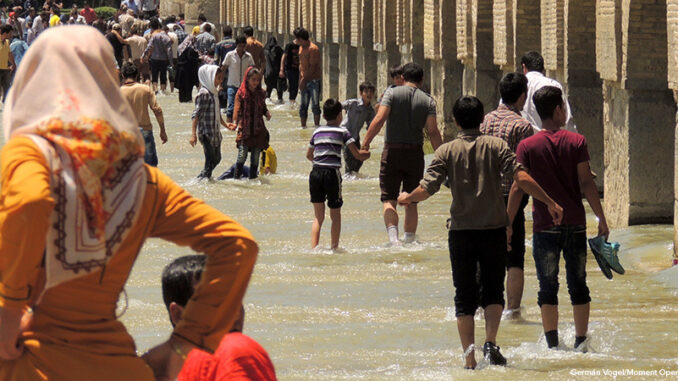
During the Trump administration there has been a worsening of the relationship between the U.S. and Iran. But in the past several weeks, the tensions between the two nations have escalated rapidly. What events led the nation here, and what might this mean for U.S.-Iran relations in the future?
A Long Buildup

On December 27, the U.S. blamed Kataib Hezbollah, an Iran-backed militia, for a rocket attack on an Iraqi military base that killed one U.S. contractor and injured several U.S. service members. Two days later, the U.S. retaliated by launching several attacks on sites in Iraq and Syria belonging to Kataib Hezbollah. The U.S. attacks killed at least 25 and wounded 55 more. Following that, there were protests outside the U.S. Embassy in Baghdad, Iraq. The protest lasted until January 1, and while no one from either side was hurt, the Embassy itself did sustain some damages. Trump pledged to hold Iran fully responsible.
The Assassination of Soleimani
On January 3, the U.S. used a drone attack to assassinate Iran’s Major General Qassem Soleimani while he was in Iraq. According to the White House, this was because Soleimani–the second most powerful person in Iran, after the Ayatollah–was in Iraq to plan an attack on the U.S. or on U.S. interests. Iran denied this claim, saying that Soleimani was in Iraq to help the Iraqi government fight Islamic State terrorists.
Four days later, Iran responded to Soleimani’s death by firing nearly two dozen ballistic missiles at U.S. military bases in Iraq. Though no one was killed in the attacks, Trump and Iranian representatives both stated their willingness to further escalate the conflict if necessary.
The morning after the attacks, Trump made televised remarks calling Soleimani the world’s top terrorist, and accusing him of training terrorist armies and carrying out terrorist strikes against civilians. He also stated that the U.S. will tighten economic sanctions against Iran until it ceases its hostile and aggressive behavior, and called on the UK, Germany, Russia, France, and China to do the same.
For several days, the world waited tensely to see if a war would break out between the U.S. and Iran. But both countries backed down, averting an international crisis. Experts are concerned, however, that the lull in tensions is only temporary. Both nations have exhibited their military might in the past few weeks, and the new round of economic sanctions is likely to deepen Iran’s anger toward the United States.
Flight 752
The story grew murkier last Saturday when a Ukrainian civilian plane was shot down over Iran. All 176 passengers aboard were killed, including 57 Canadians. Iran later admitted that it had shot the plane down in error. Canadian Prime Minister Justin Trudeau has vowed to seek compensation and justice for the Canadian victims. For its part, Iran accepted responsibility for the error but was also quick to point out that it happened because increasing U.S. aggression led Iran to believe that the plane was being used as a weapon.
